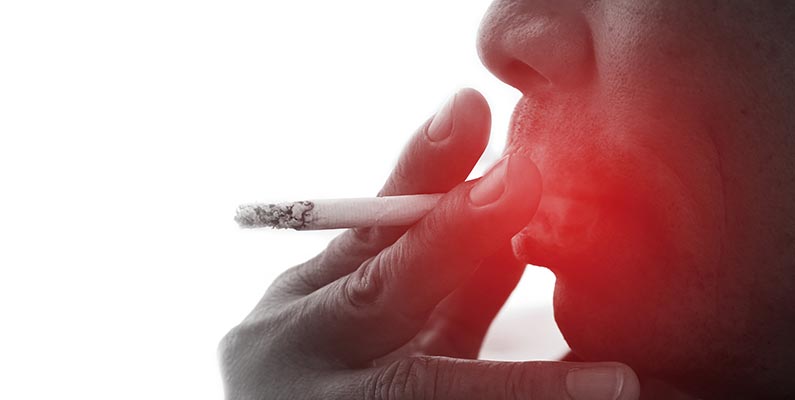
Tobacco: unfiltered facts
Tobacco use in any form—cigarette, cigar, pipe and smokeless (spit) tobacco—increases the risk for a variety of oral health conditions, including:
Periodontal (gum) disease: Studies show that tobacco may be one of the most significant risk factors in the development and progression of gum disease.1 In fact, smoking may play a significant role in more than 50 percent of chronic periodontal disease cases.2
Tooth decay, bad breath and stained teeth: Despite good oral health habits, tobacco use is still more likely to cause cavities due to decreased saliva flow, increased plaque and tartar buildup and a greater pH level in the mouth. Beyond the medical risks, bad breath and stained teeth are other negative effects of smoking.
Tooth loss: Smokers are about twice as likely to lose their teeth as nonsmokers.3,4 Smoking can restrict blood flow to gum tissues, limiting delivery of nutrients necessary for the bone and gum support of teeth.
Oral cancer: Of the nearly 40,000 Americans diagnosed with oral cancer annually, about 64 percent will live past the five-year survival milestone.5 Tobacco use increases oral cancer risk, and those who use tobacco and consume excessive alcohol have an especially high risk.6
Discuss your concerns about tobacco use and its influence on your oral health with your dentist.
This information is available for download as an oral health flyer.
1 American Academy of Periodontology, web.
2 New York Times Health Guide, web.
3 Krall EA, Dawson-Hughes B, Garvey AJ, Garcia RI, “Smoking, Smoking Cessation, and Tooth Loss.” Journal of Dental Research 76, no. 10 (1997): 1653–1659.
4 Dietrich T, Maserejian NN, Joshipura KJ, Krall EA, Garcia RI, “Tobacco Use and Incidence of Tooth Loss Among US Male Health Professionals,” Journal of Dental Research 86, no. 4 (2007): 373–377.
5 The National Cancer Institute, "SEER Stat Fact Sheets: Oral Cavity and Pharynx Cancer," web.
6 Oral Cancer Foundation, web.